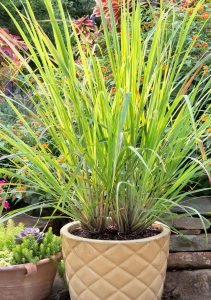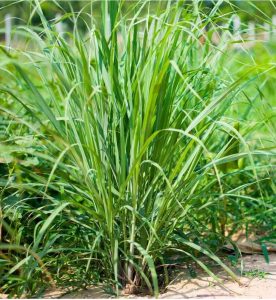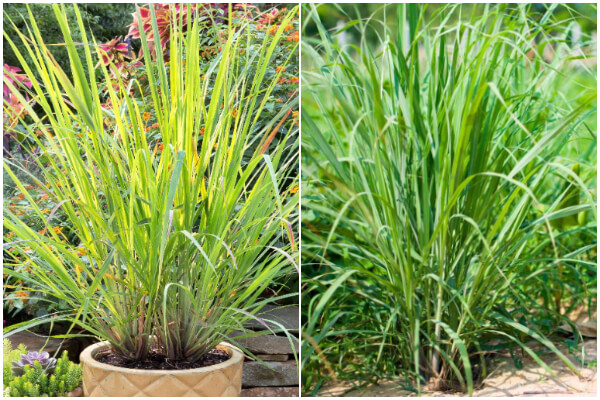Lemongrass, a tropical plant known for its vibrant citrus aroma, is an incredible addition to any garden. Whether you’re an experienced gardener or a novice, this versatile plant offers numerous benefits. From its culinary applications and health-boosting properties to its natural insect-repelling abilities, lemongrass is a powerhouse of utility and beauty. Let’s dive into why you should consider growing lemongrass in your garden and how to make it thrive.

1. Health Benefits of Lemongrass
Lemongrass has been used for centuries in traditional medicine due to its wide range of health-promoting properties. Modern science has confirmed many of these benefits, making it a valuable addition to your wellness routine.
Lemongrass is rich in antioxidants, which help combat free radicals in the body and reduce oxidative stress, potentially lowering the risk of chronic diseases. The plant contains compounds like citral and limonene, which have anti-inflammatory properties that may alleviate pain and swelling. Lemongrass tea is often consumed to relieve bloating, indigestion, and other digestive discomforts. Packed with vitamins A and C, lemongrass can help strengthen your immune system. The soothing aroma of lemongrass is known to reduce anxiety and promote relaxation, making it a popular ingredient in aromatherapy.
2. Culinary Uses of Lemongrass
Lemongrass is a staple in many cuisines, especially in Southeast Asian cooking. Its distinct citrusy flavor can elevate a variety of dishes, making it a must-have for home chefs.

It is a key ingredient in dishes like Tom Yum soup and Thai green curry. Use crushed lemongrass stalks to infuse meats, seafood, or tofu with a zesty kick. Lemongrass tea is refreshing, caffeine-free, and known for its calming effects. Its subtle citrus notes pair well with desserts like custards, sorbets, and cakes. Add lemongrass to broths or stews for a fragrant base.
3. Natural Insect Repellent
One of the most practical reasons to grow lemongrass is its ability to repel insects naturally. Lemongrass contains citronella, a compound widely used in mosquito repellents.
Plant lemongrass around your garden seating areas to keep mosquitoes at bay. Unlike chemical repellents, lemongrass provides a safe and organic alternative to managing pests. Crush fresh lemongrass leaves and rub them on your skin for an effective mosquito deterrent or use its essential oil in diffusers.
4. Easy to Grow and Maintain
Lemongrass is surprisingly easy to grow and maintain, making it an excellent choice for busy gardeners or those new to gardening.
It is tolerant of various conditions and requires minimal care. It thrives in pots, raised beds, or directly in the ground, provided it gets adequate sunlight. Once established, lemongrass grows quickly and can provide a continuous harvest throughout the growing season. It is drought-tolerant and pest-resistant, making it a reliable addition to your garden.
5. Aesthetic Appeal
Beyond its practical uses, lemongrass adds a touch of elegance to your garden. Its tall, graceful blades and refreshing fragrance enhance the visual and sensory appeal of any outdoor space.

Use lemongrass as a border plant to define garden spaces with its upright growth habit. The citrusy aroma creates a calming atmosphere, perfect for gardens, patios, or balconies. Lemongrass pairs beautifully with other ornamental grasses or tropical plants for a cohesive look.
6. Environmental Benefits
Growing lemongrass in your garden also has positive environmental impacts. Its flowers attract beneficial insects like bees and butterflies, supporting pollination and local ecosystems. Like other plants, lemongrass contributes to cleaner air by absorbing carbon dioxide and releasing oxygen. In garden, the roots help prevent soil erosion and improve its structure.
How to Grow Lemongrass in Your Garden
Lemongrass is a versatile and rewarding plant to grow in your garden, offering a host of benefits from its culinary uses to its natural insect-repelling properties. Cultivating lemongrass is relatively straightforward, even for beginner gardeners. Follow these step-by-step instructions to ensure your lemongrass thrives in your home garden.
- Choose the Right Location
The success of your lemongrass starts with selecting an appropriate location. Lemongrass thrives in full sun, so choose a spot in your garden that receives at least 6 to 8 hours of direct sunlight daily. If you’re growing it in containers, position the pots in a sunny area like a patio, deck, or balcony. Without sufficient sunlight, the plant may become weak, and its growth will be stunted.
- Prepare the Soil
Lemongrass prefers well-draining soil that is rich in organic matter. Before planting, improve your garden soil by mixing in compost or aged manure to enhance its fertility and drainage. If you’re planting in a pot, use a high-quality potting mix designed for herbs or vegetables. Proper soil preparation ensures your plant will have the nutrients it needs to grow vigorously.
- Spacing Requirements
When planting lemongrass in your garden, space the plants at least 24 inches apart to accommodate their bushy growth habit. This spacing allows for proper air circulation, which helps prevent fungal diseases and promotes healthy development. If growing multiple plants in pots, use containers that are at least 12 inches wide and deep for each plant to give the roots enough room to spread.
Caring for Lemongrass
- Watering Tips
Lemongrass enjoys consistently moist soil but does not tolerate waterlogged conditions. Water your plants regularly, especially during hot or dry weather, to maintain soil moisture. Always allow the top inch of soil to dry out slightly between waterings to prevent root rot. For potted plants, ensure the pots have drainage holes to avoid water accumulation at the base.
- Fertilizing for Optimal Growth
To keep your lemongrass lush and productive, feed it with a balanced fertilizer or organic compost every four to six weeks during the growing season. A fertilizer with an equal ratio of nitrogen, phosphorus, and potassium works well. Regular feeding ensures your plant receives all the nutrients it needs for vigorous growth and robust flavor.
- Pruning and Maintenance
Regular pruning helps your lemongrass maintain its shape and encourages new growth. Remove any old, dry, or damaged leaves to keep the plant healthy and tidy. Pruning also allows sunlight to reach the inner parts of the plant, promoting overall vitality. Don’t be afraid to cut back the plant significantly at the end of the growing season to prepare it for the next cycle.
- Harvesting
Lemongrass stalks are ready to harvest when they are thick and firm, typically reaching a height of about 12 inches. To harvest, use a sharp knife or garden shears to cut the stalks at their base. This is where the most flavor is concentrated, making it ideal for culinary use. Harvesting regularly encourages new growth, so don’t hesitate to cut mature stalks as needed.
In addition to the stalks, lemongrass leaves are also valuable. They can be used to make refreshing teas, infusions, or as aromatic additions to broths and stews. To harvest leaves, simply cut the desired amount near the top of the plant. Ensure you leave enough foliage for the plant to continue photosynthesizing and growing.
Additional Tips for Growing Lemongrass
- Overwintering: In colder climates, lemongrass is not frost-tolerant. If you live in an area with harsh winters, grow your lemongrass in pots so you can move it indoors when temperatures drop below 40°F (4°C). Place the pots near a sunny window or use a grow light to mimic natural sunlight.
- Propagating New Plants: Lemongrass is easy to propagate from existing stalks. Simply place a stalk with its base intact in a glass of water and wait for roots to develop before transplanting it into soil.
- Pest and Disease Management: While lemongrass is generally pest-resistant, watch out for common issues like fungal diseases caused by excessive moisture. Ensure proper spacing and adequate air circulation to prevent problems.
Lemongrass is more than just a plant—it’s a multipurpose marvel that can enhance your garden and lifestyle. Its health benefits, culinary versatility, insect-repelling properties, and low-maintenance care make it a valuable addition to any home garden. By growing lemongrass, you’ll not only enjoy its many uses but also contribute to a greener, healthier environment. Start cultivating lemongrass today and reap the rewards of this amazing plant.

